Blue gourd vase Masao Tagai
Blue gourd vase Masao Tagai
Couldn't load pickup availability
Width: 20.8cm x 20.8cm Height: 18.5cm
Celadon flower vase by Masao Tagai
1. Work summary
This piece is a round jar-shaped vase covered entirely in a soft, sky-blue celadon glaze. The full, spherical body and tightly drawn rim accentuate the tension and tautness hidden within the vessel. Inside the highly transparent, thick glaze, subtle ice cracks run like a mesh, and when light hits them, the faint shadows of the cracks emerge from deep within. This piece truly exudes the clarity of the air after rain, and the mysterious beauty that classical celadon is known for.
2. Shape and design
Round Vase Shape <br data-start="315" data-end="318">The body is nearly a perfect sphere, with lines that constantly change depending on the angle from which it is viewed. The reflections created by the succession of curved surfaces softly reflect the surrounding scenery, incorporating the shadows of the tea room and the hanging scrolls in the tokonoma alcove, making the vessel itself function as a "mirror of space."
Narrow neck and small edge <br data-start="441" data-end="444">The rim is slightly curved outwards, revealing a dull silver-grey colour derived from the iron. This is the result of the "iron rim" technique, in which the glaze is applied very thinly and then lightly oxidised towards the end of the firing. The aim is to tighten the generosity of the pale blue, and to naturally draw the eye upwards when flowers are inserted.
3. Technical features
Adjusting the glaze
By using a process called "reduction" that suppresses the amount of iron powder and converts it to an oxidized state in the final stage of firing, a pure blue color without any reddish tinge is achieved.
Difference in shrinkage between the clay and the glaze layer
Feldspar is mixed into the clay to give it a slightly higher expansion coefficient than the glaze. Rapid cooling after firing causes the glaze surface to crack finely, resulting in uniform cracking and indentation.
Mirror finish
After firing, the pot is lightly heated again at a low temperature to remelt the glassy surface of the glaze and enhance the luster. This results in a mirror-like surface that easily captures the indoor light, enhancing the reflection of the vase.
Historical background and aesthetic significance
Celadon was passed down through the Yuezhou kilns of the Six Dynasties, the Ru kilns and official kilns of the Northern Song Dynasty, and the Longquan kilns of the Southern Song Dynasty, and its pure light blue color was praised as "heavenly blue." The prototype of the spherical vase can be found in the celestial sphere vase that was popular in the late Ming and early Qing Dynasties, but this work has a low neck and is made on a scale that is conscious of its ease of use in Japanese floor decorations and tea ceremonies. Masao Tagai has reinterpreted it as a minimalist vase that blends into modern spaces, combining the clear serenity of Song celadon with the wabi of "one flower" in the Japanese tea ceremony.
5. Combination with flower materials
| season | Recommended flower materials | Points to consider |
|---|---|---|
| spring | A single wild cherry blossom, a snow willow | The pale blue surface of the vessel reflects the pale pink and white of the petals, creating the feeling of a spring haze. |
| summer | Hangesho, White thread grass | The cool blue glaze echoes the white underside of the leaves, bringing a refreshing feeling to the tokonoma alcove. |
| autumn | A single bellflower, acanthus | The slender neck firmly supports the flower head, and the spherical volume accentuates the lines of the autumn grasses. |
| winter | Kantsubaki, Nanten | The brilliant red stands out against the glaze surface, and the shadows hidden in the crazing evoke a snowy landscape. |
6. Points to note when viewing
Depth of the Glaze Layer <br data-start="1456" data-end="1459">When strong oblique light is shone on it, the ice cracks and intrusions appear faintly through the glass layer, creating a three-dimensional effect as if peering into the deep sea.
Reflected Scenery <br data-start="1527" data-end="1530">The spherical surface reflects its surroundings, so the appearance changes depending on the position of the lighting and hanging scrolls. At the tea ceremony, it can be fun to bring the light of a candle or lantern close to it and project a flickering light.
Changes over time <br data-start="1610" data-end="1613">The color of the crazing changes slightly due to the effects of flower water and humidity, and you can enjoy the process as the blue changes to a calm, dull color over time.
7. Conclusion
This "Celadon Vase" has the tranquil luster of the celadon glaze and the capacity of the round vase, making it a masterpiece that bridges the beauty of wabi-sabi and modern minimalism. Thanks to the firing control techniques that Masao Tagai has cultivated over many years, the transparent blue and ice cracks coexist in perfect balance, embodying the "art of blank space" that is completed only when a flower is inserted. We hope you will welcome a flower in each season and develop your own flower story with the scenery reflected on the surface of the vase.
Share
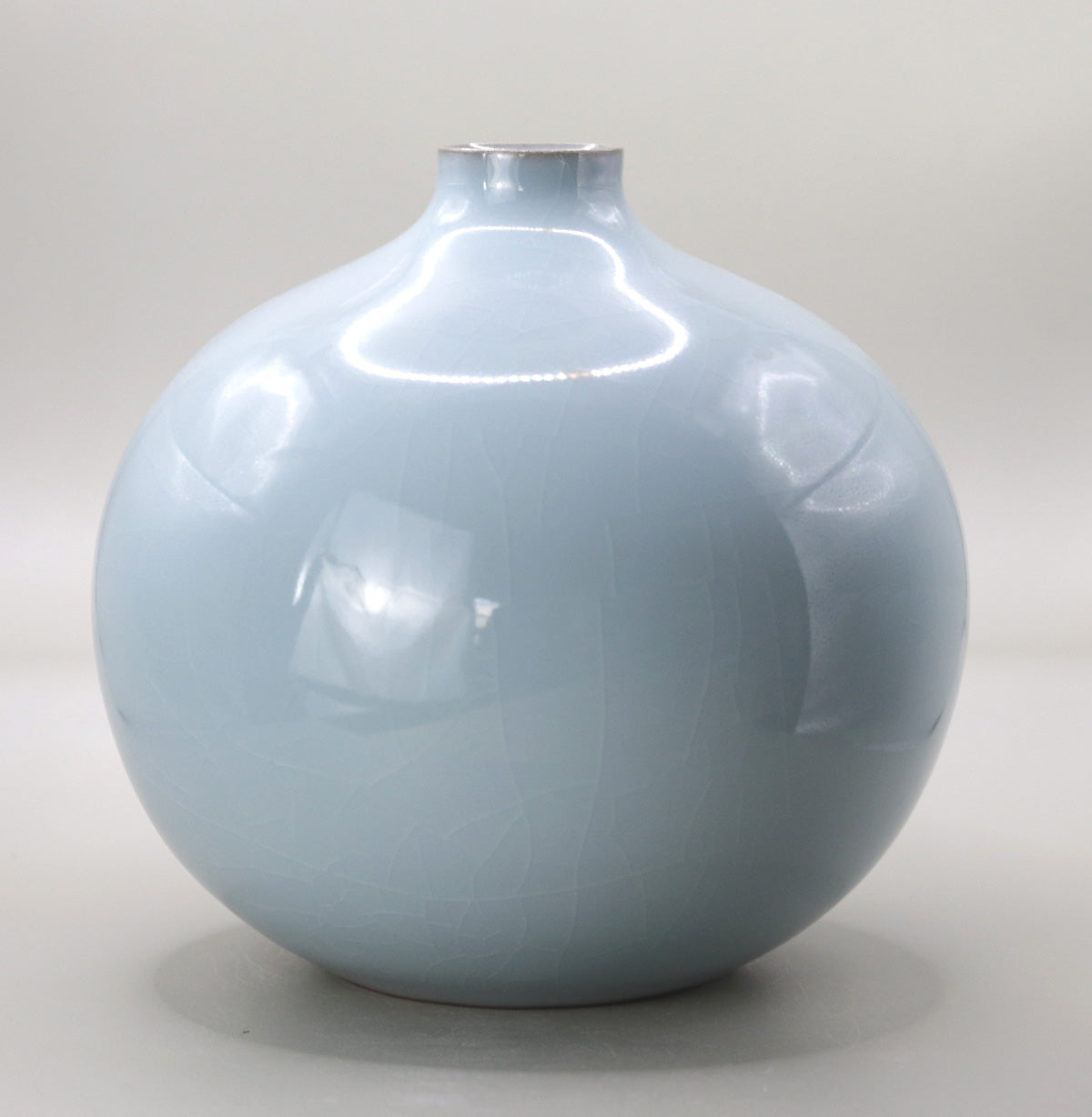
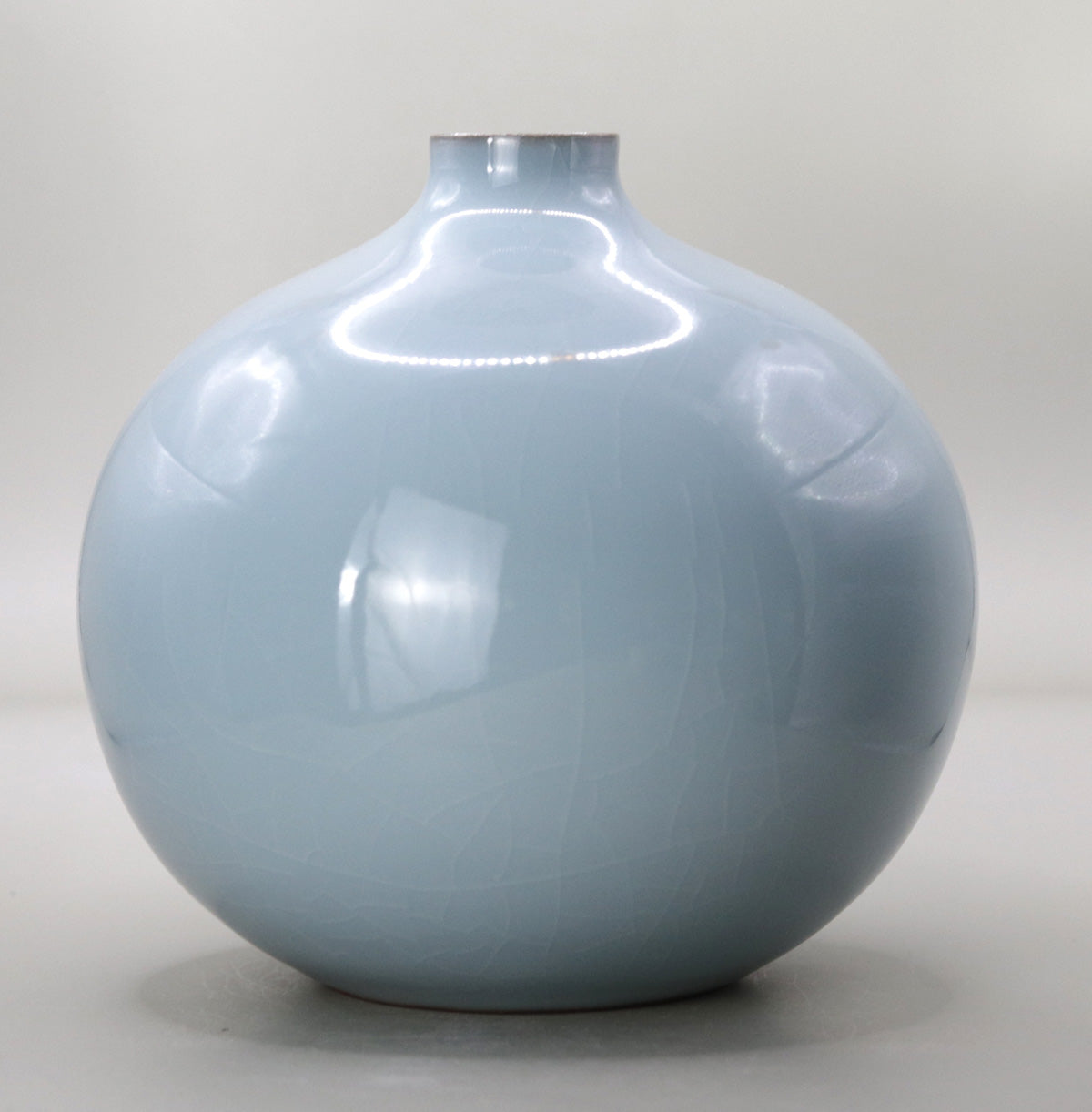
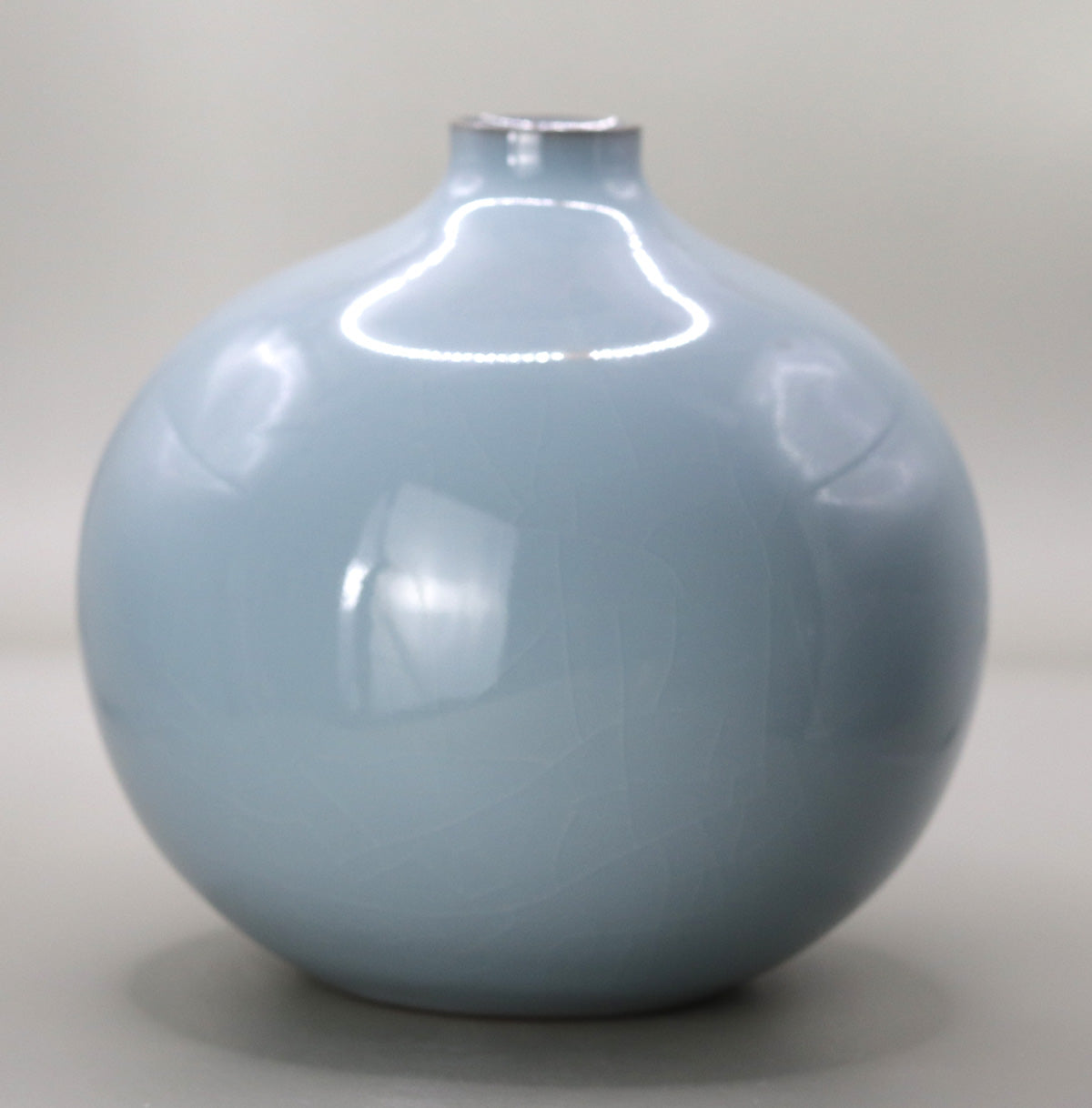
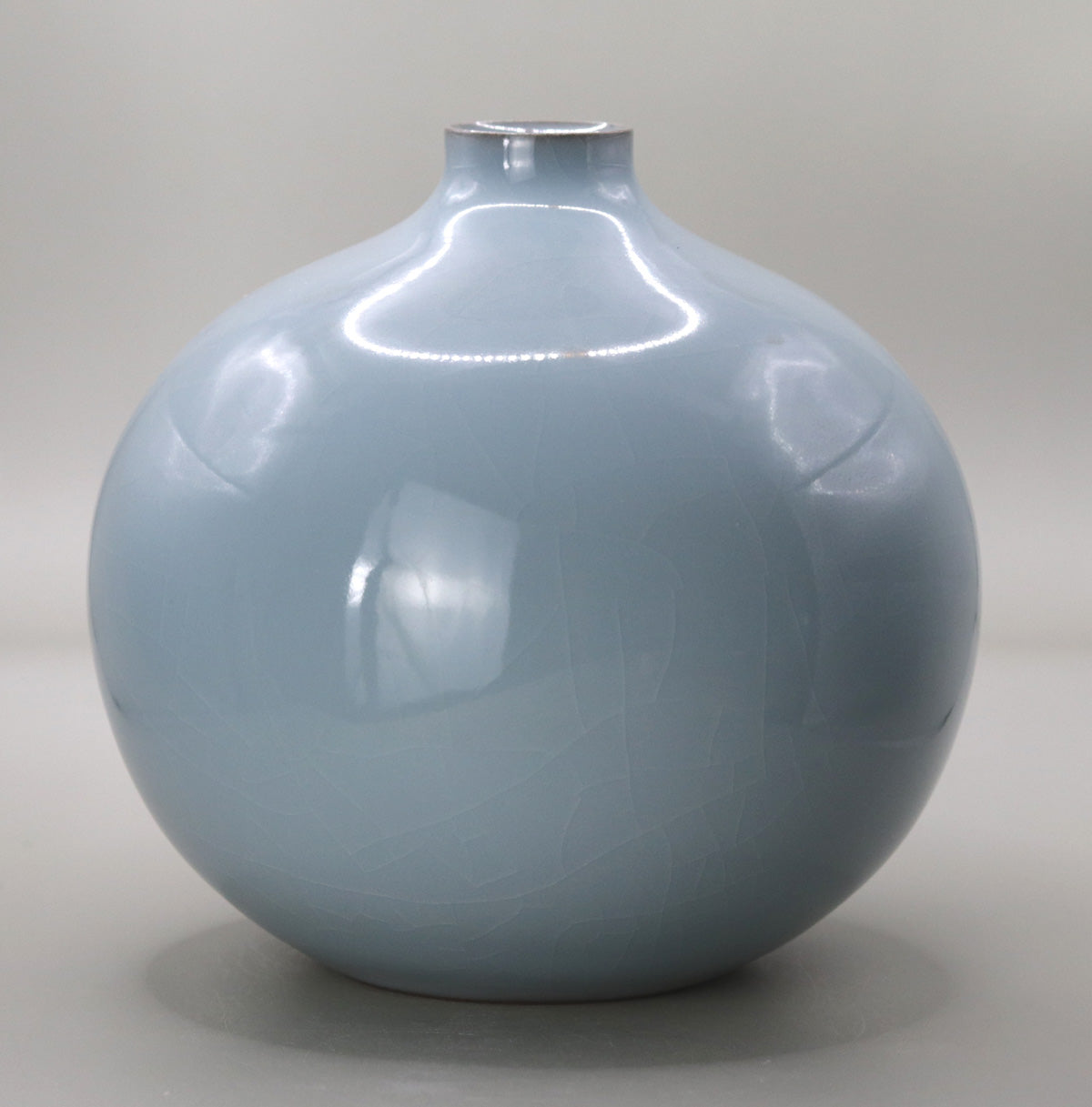
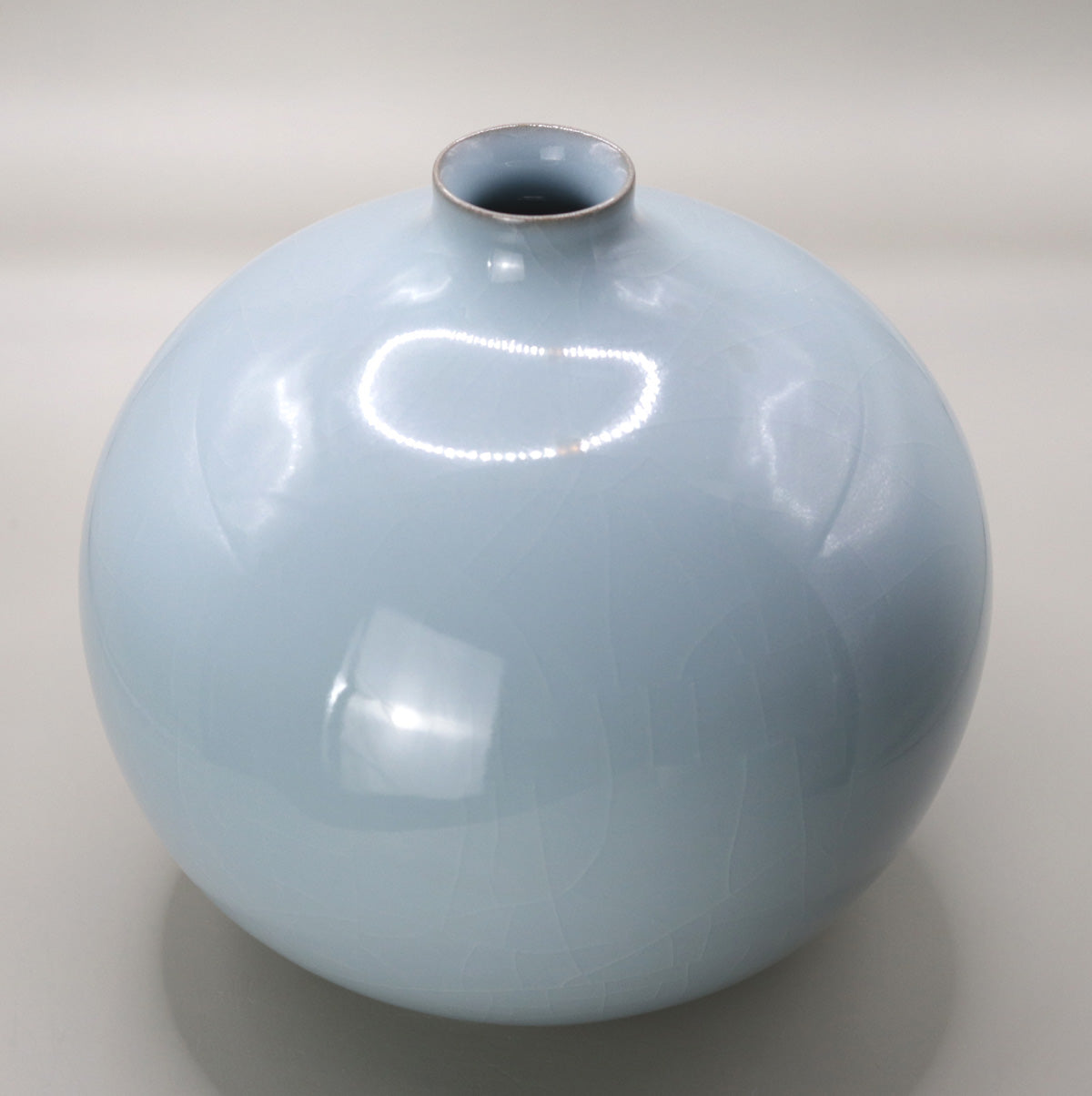
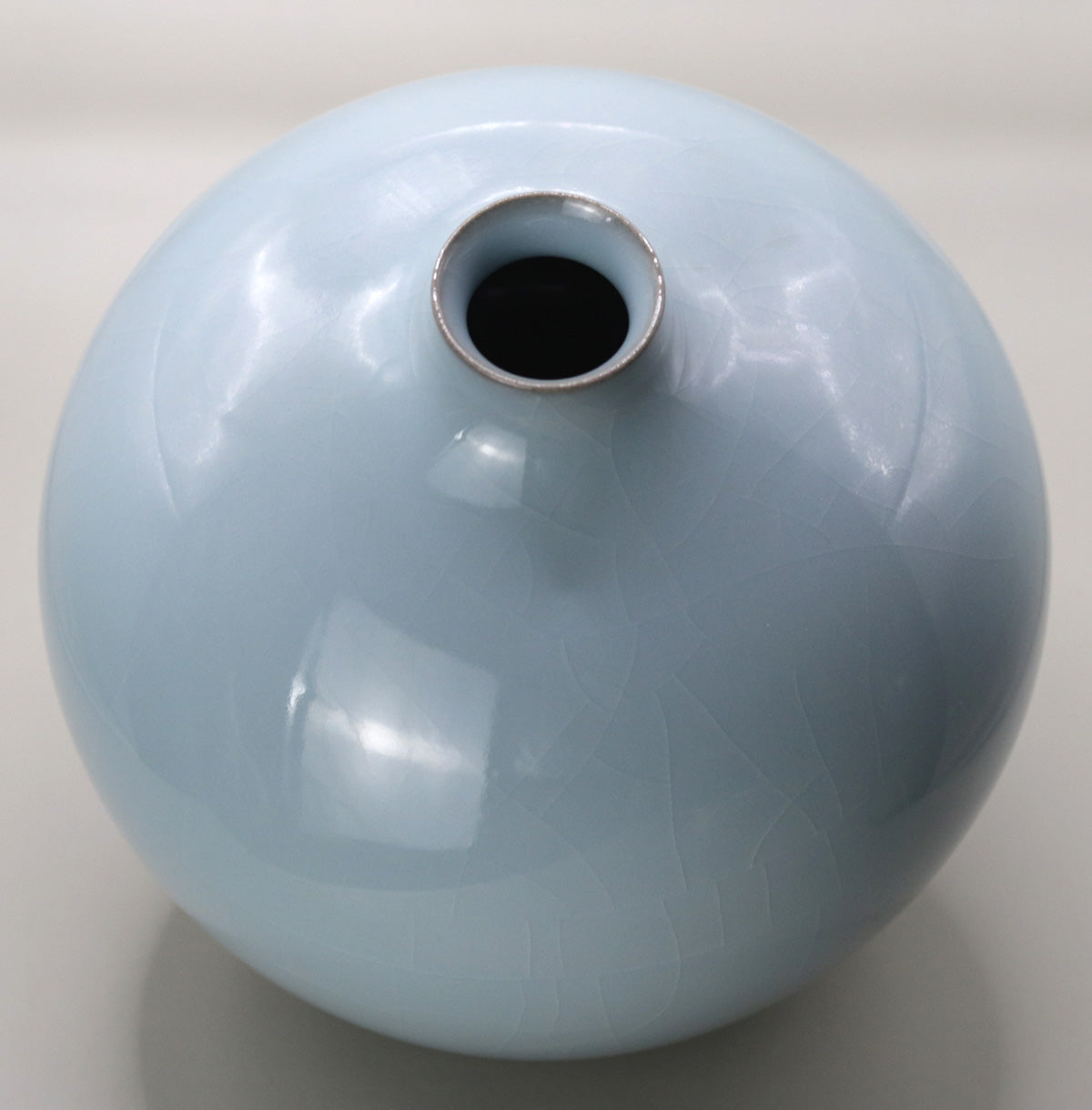
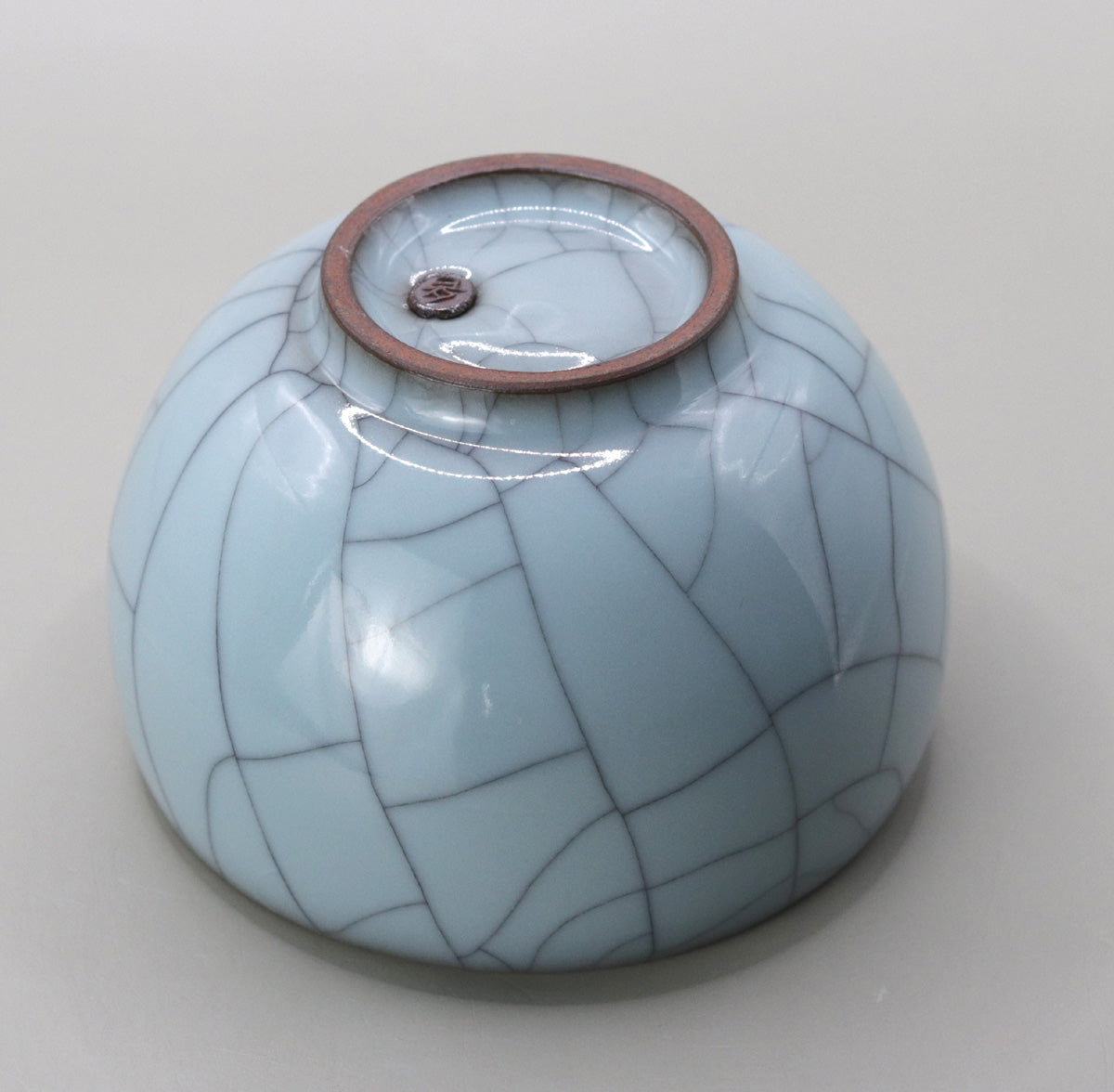
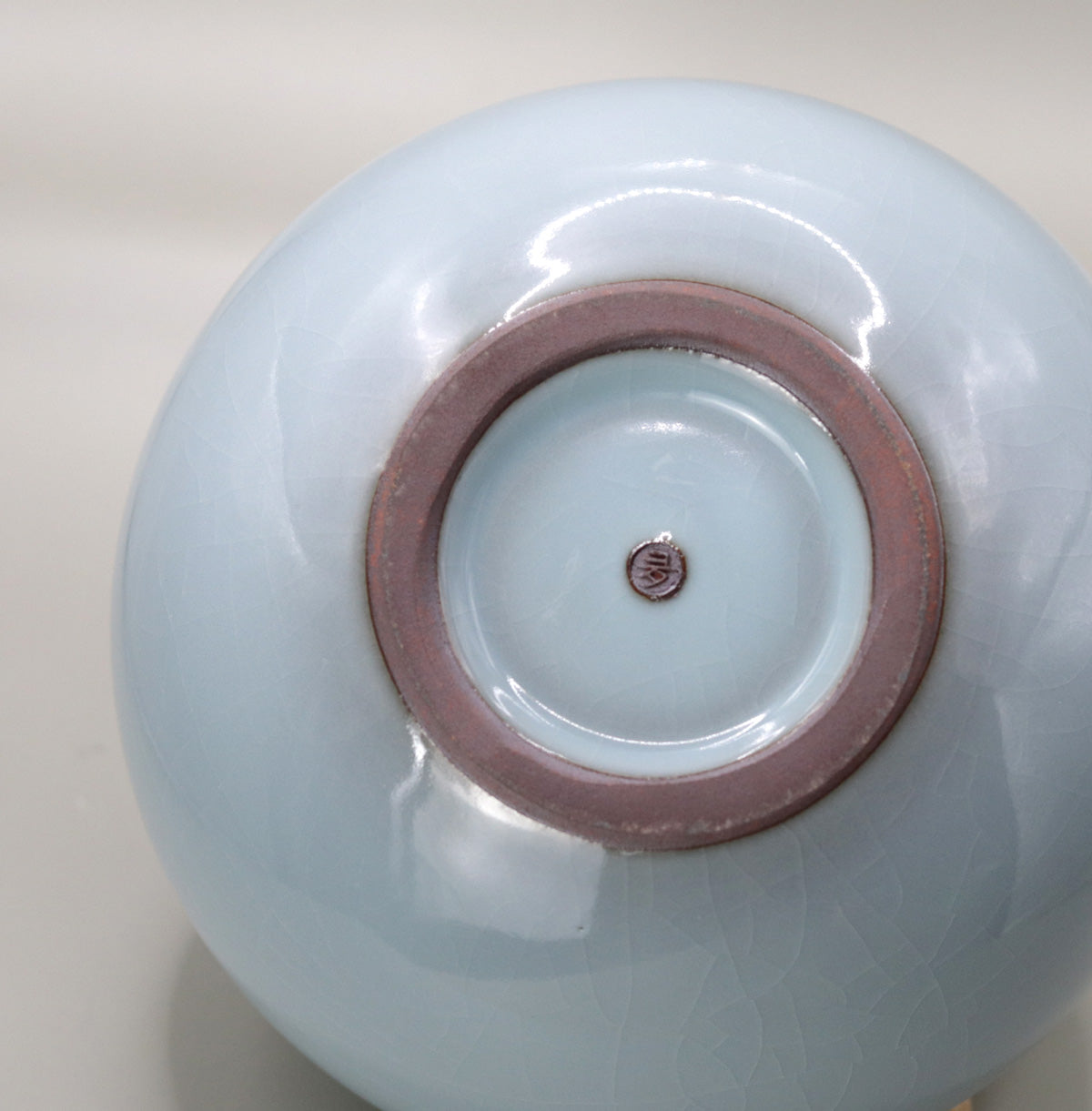
Multi-Column
-
[I will send it to you quickly and carefully]
We carefully package each product in a way that suits it best.
Also, delivery times vary depending on the piece (vessel, etc.).
Items that already come with a box will be shipped within 1-3 days of the order date.
For items that require a box to be made after your order, it will take approximately 30 days for production to be completed and then shipped.
In either case, once we have confirmed your order, we will contact you by email to inform you of the delivery date.
-
[Requests when purchasing pottery]
Even products that look the same may differ slightly in color, shape, size, etc.
The way the glaze is used, the power of the kiln, the firing method, the season, and the humidity also affect the appearance of the pottery.
Please understand the individuality of each piece of pottery and enjoy the unique warmth of handmade.








